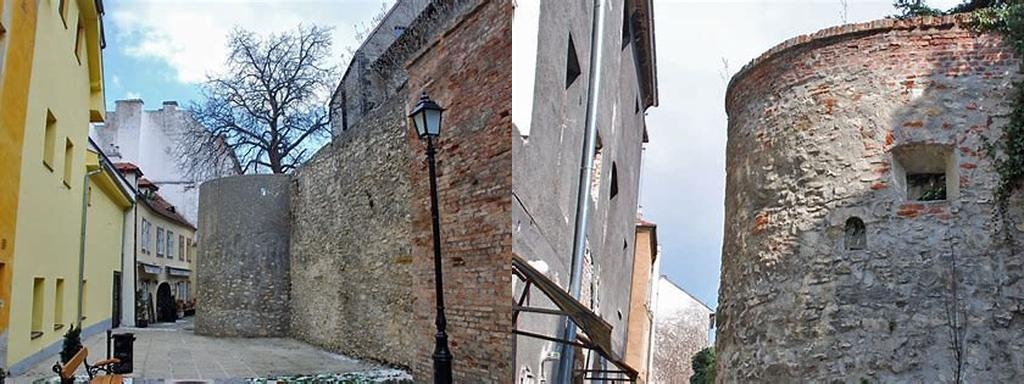
Soproni vár, or Sopron Castle, is one of those places where history buds from every stone, and you don’t need an overactive imagination to envision the centuries rolling by as you wander through its former courtyards and under its arched gates. Located in the heart of Sopron, a city often called the “most loyal town” because of its historical significance during the 1921 referendum, the castle occupies a prime spot in the old town. The fascinating thing about Sopron Castle is that it isn’t just a single structure; rather, the medieval fortress grew organicially out of the ancient Roman walls of Scarbantia, the original name for Sopron in antiquity. Walking here, you’re truly treading over layers—quite literally—of European history.
When you first arrive, the difference between the old and the new dazzles you. Bits of Roman masonry still peek out along the castle’s foundations, offering tangible proof that this place has seen it all: Roman legionnaires, medieval knights, baroque courtiers, and twentieth-century townsfolk. The Roman city walls, built around the 1st century AD, became the backbone on which the medieval castle and town were later crafted, beginning in the chaos after the fall of the Roman Empire. If you’re even slightly interested in history, it’s a bit like finding a palimpsest on a grand, architectural scale.
As you stroll through the area, the castle no longer stands as a single keep or residence, as you might expect from fairy tales. Instead, the structure blends seamlessly into Sopron’s old town, so much so that many visitors walk its periphery without realizing they are, in fact, tracing the outline of the ancient walls. The original castle keep once stood close to what is now the Firewatch Tower, and portions of the castle walls are neatly integrated into the series of pastel-colored houses and cozy little lanes that make this part of town so uniquely atmospheric. There is a real sense of time folding over itself here; one moment you’re peering into a medieval bastion, the next you’re surrounded by buzzing cafés and family-run shops.
The castle played a significant role in the town’s medieval drama. During the Mongol invasion of Hungary in 1241–42, the citizens of Sopron took shelter within the castle, and the fortifications withstood the horde’s assault. Fast-forward a few centuries and the castle was at the center of the town’s economic and cultural blossoming. In the Renaissance and Baroque periods, wealthy citizens wanted to display their new prosperity, and so they constructed elaborate mansions—many of them directly onto the old fortress walls. These beautiful palaces, like the Storno House and the Fabricius House, now house museums where you can duck out of the sun for a while and travel backwards, not just decades but centuries. 🏰
What really sets Sopron Castle apart from many other castle experiences in Europe is the way daily life continues to swirl around its ancient stones. In many places, castles are preserved as time capsules, their rooms stilled and their courtyards silent. Here, the past is a living companion: children race along the ramparts on their way to school, locals gather for concerts in the Town Hall Square, and the sound of clinking glasses drifts through centuries-old archways. The juxtaposition couldn’t be more charming or more casually impressive.
Make a point to stand by any of the open gates or at the remains of the Roman walls and just let your mind wander. Imagine the 15th-century markets bustling with traders, or the anxiety in the air when word of invaders spread from village to village. The castle was also home to pivotal events in Hungarian history, most notably the 1921 Sopron referendum when the citizens defiantly chose to remain part of Hungary rather than joining Austria, and earned the city its lasting nickname, “Civitas fidelissima”—the Most Loyal Town. It’s history not as a distant lesson, but as a living, breathing context for present-day Sopron.
If you’re a fan of architecture, the variety here is intoxicating. Wander the quiet side streets to find Renaissance, Gothic, Baroque, and even traces of romantic 19th-century buildings—each one telling a piece of the castle’s long story. And don’t skip climbing up the legendary Firewatch Tower for a sweeping city–and-countryside view: from there, it’s easy to appreciate how Sopron grew up around the protective arms of its ancient castle.
Whether you come for the history, the architectural details, or just to snack your way through the open-air cafés tucked into the former fortress’s shadow, Soproni vár is both an artifact and an adventure. You leave with the distinct feeling that you’ve stepped in and out of different centuries, guided by an unbroken thread running through the heart of Sopron.





